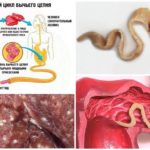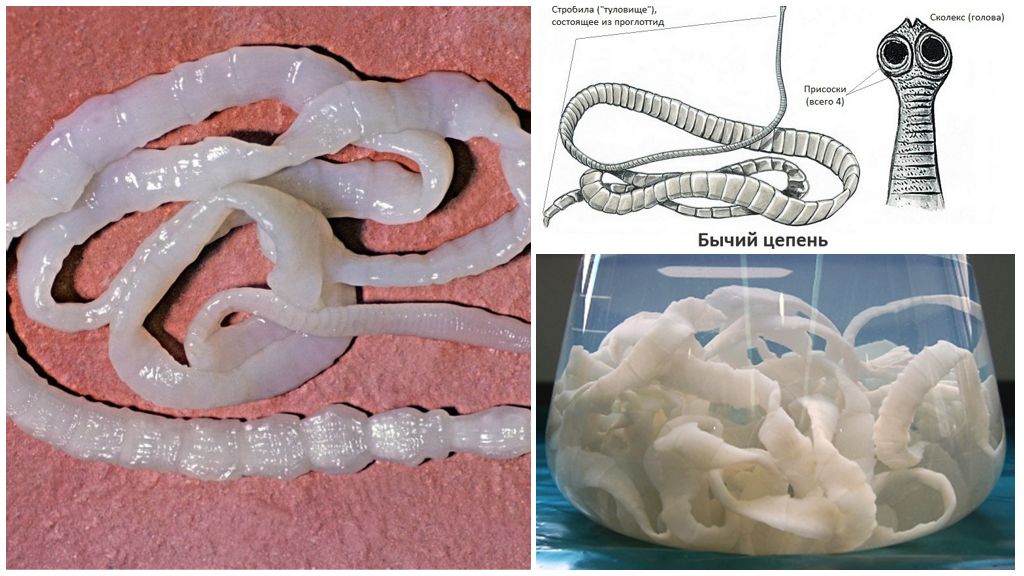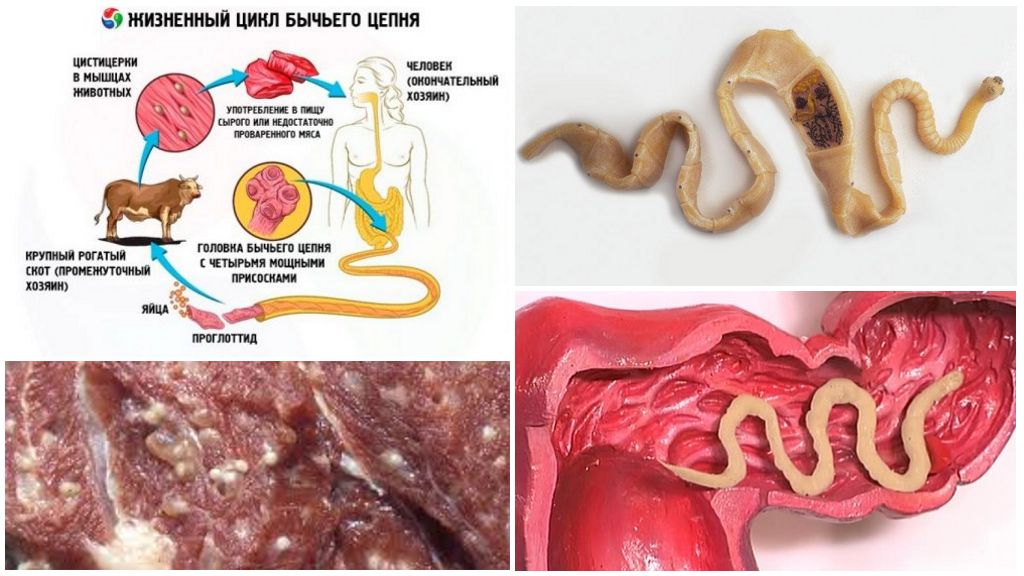How is the development of the bull chain
- Bullseye
- The life cycle of the development of the bull chain
The life cycle of the development of the bull chain occurs with the change of conditions for different stages of the parasite. A bovine or unarmed tapeworm has a primary and intermediate owner, in whose organism it goes through different stages of its existence. The parasite can reach large sizes and cause a lot of inconvenience and serious complications in humans, in which the bovine tapeworm is parasitic and is the ultimate owner.
Reproductive function
The trunk of the chain is divided into certain segments. The newly formed segments depart from the head.They gradually ripen and pass into segments filled with eggs (up to 150 thousand), which are separated from the tapeworm and leave the body.
On a note!
The reproductive system of the segments is hermaphroditic. Parasites breed by self-fertilization. Breeding organs are represented by the ovaries, testes and uterus. The end segments of the helminth contain a uterus with numerous branches, in which the development of the bovine chain in the egg stage occurs.
The helminth egg has a round or oval shape and a thin transparent shell. After the processes of reproduction, an embryo is formed in it. This embryo (oncosphere) is surrounded by a yellowish shell and is equipped with hooks.
Stages of life
The process of vital activity of the chain occurs, starting with the eggs. The parts of the body filled with them (segments) of the bovine tapeworm, mixing with fecal masses, leave for the surrounding world. The main habitat of the bovine chain is the human body. In it occurs the reproductive process and fertilization. In each separated segment (proglottide) about 100 thousand eggs with an invasive larva inside.
Some time after the release to the external environment, the proglottids move around the plants and the ground, distributing in this way a multitude of eggs that are absorbed by large horned animals along with plant food. This animal is an intermediate host.
Important!
Do not confuse the life cycle of a bovine tapeworm with a hepatic fluke, for which the cow's body is the main habitat, and the snail is a small pond snail. In the flukes, the larval stage develops. At this stage, this stage leaves the mollusk and proceeds to a further stage. The main owner of the bull chain is man. In it, it reaches a sexually mature state and multiplies. The cattle or game is the intermediate host of the bovine tapeworm.
In the stomach of a cow or other intermediate host, the development cycle continues. The egg shell is destroyed by the enzymes of the digestion of animals, and the larva of the chain is released. At the next stage of development, it should turn into a cysticercus or a Finn.To do this, it is introduced into the intestinal wall and, having passed through it, penetrates the bloodstream to be distributed throughout the body. Finn usually develops in muscle tissue type. There, the larvae acquire a shell that has accumulated liquid and remain until the next stage of the life cycle. Now they need to be inside their main owner.
The scheme of the life cycle of the development of the parasite implies that it must be eaten by humans further. This occurs when eating meat (beef) that was not thermally processed.
Interesting!
The Finns of a bull chain caught in intestines are destroyed by human digestive enzymes, and the parasite is attached to the wall of the intestines by means of its suckers. Here it begins to grow and develop so quickly that in a three-month cycle it can form a five-meter length. The worm produces new segments with eggs that go into the environment and start the cycle of life anew.
If the sequence of stages was not observed, the larva dies at some of those stages of the cycle that did not receive further development.









